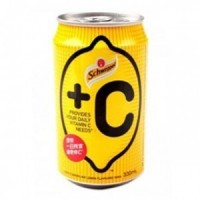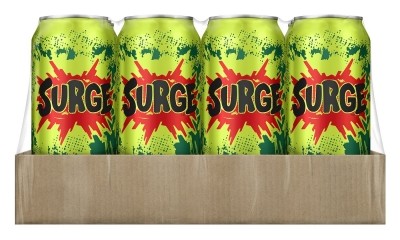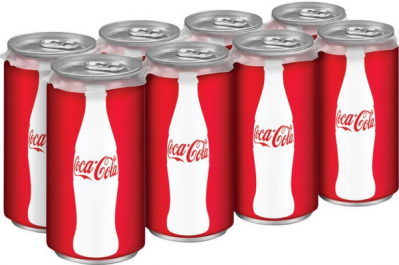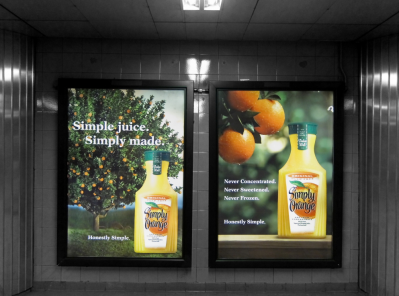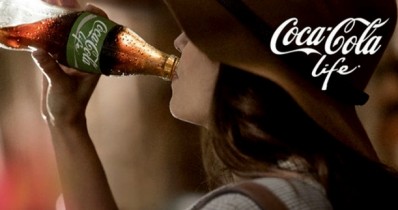Insights from Barclays Back to School conference
Coca-Cola: We have to be willing to be a little riskier
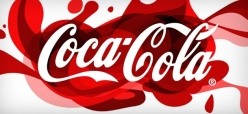
“We are fairly careful and cautious in the way we do things and try to make sure that we have the answer and it is the right answer before we move forward, and that caution has caused us to be slow and slow to respond when we needed to be much, much faster,” said chief financial officer and executive vice president Kathy Waller.
“So we know we've got to change that, we know we've got to change the way some decisions are made and we know we've got to be a little bit more risky in the way we do things, which means that you will see us perhaps course correcting as we go along as we are looking to get more of that balanced growth between volume and price realization.”
Can Coke realize its 2020 vision?
With $47 billion in revenue last year and an operating income of $10 billion (80% of that coming from Coke International) and 30% of overall industry share, the company is now eyeing $300 billion in beverage growth between 2014 and 2020 (excluding North America). But 2013 volume growth was just 2%—well below the company’s 3-4% annual growth target to achieve the 2020 vision.
Ahmet Bozer, executive vice president of Coca-Cola International, said that despite the challenging macro and political environment of the past year, Coca Cola has managed top- and bottom-line growth in the major developed and emerging markets.
Though he admitted that the Mexican sugar tax has negatively impacted short-term returns, the results been better than expected on good pricing and packaging portfolio decision-making. Moreover, macro pressure from Europe’s continued economic troubles has been offset by good performance in China and “very strong” results in Japan.
Coke’s strategy is dually built on accelerating growth in its core sparkling portfolio while selectively growing the stills portfolio—where the beverage CPG has “a lot of work to do”, Bozer said.
Calling sparkling a “challenging” market, Bozer nonetheless said the opportunities are massive, which Coke can capitalize on through good price/pack architecture, marketplace execution, marketing and innovation.
He cited wins in each category; among them: the success of the 300 mL PET immediate consumption packs in the Philippines that sell for 10 pesos each and have soared in popularity among teens (price/pack architecture); the hugely successful “Share a Coke” campaign, which is now in 80 markets worldwide (marketing), and the launch of premium sparkling beverage Schweppes C+ in China, Schweppes C+ in China with vitamin C and a great flavored sparkling beverage, with a higher price point that is significantly boosting margins (innovation).
Coke’s targeted investment in stills led to capturing 1/3 of the market
But perhaps a bigger future growth opportunity for Coke is in stills, where it is already the market leader. Indeed, Waller noted that the manufacturer has a pipeline of 20+ brands that generate annual sales revenue between $0.5 billion and $1 billion, with more than half of them being still beverages. For example, the Fuze tea brand—which is “well on its way” to becoming another billion-dollar brand—is posting strong results around the world.
The difference in Coke’s approach to stills is its more targeted approach to investment, added Bozer , giving the example of the company’s recent restructuring of its approach to the juice business. The approach consists of “building capability for doing the juice business in a fit-for-purpose way, growing the base, innovating and actually doing acquisitions,” Bozer said.
“And we have followed that, and since 2007 we have captured one-third of the incremental industry value that was created during that period, and our share lead versus our nearest competitor on juices has now expanded beyond 2-to-1. So this basically shows that as we focus on a category that we choose to compete, our system can change itself and win.”
But in order to continue growing market share, the company has to do more and do it faster—which requires innovative thinking as much as innovative products, Waller said, adding: “so we have taken a fresh look at how best to capture value.”
In some categories, that means leveraging partnerships to capture more value, as Coca Cola did by partnering with Monster Beverage Corp. last month. The deal, in which Monster is assuming control of Coke’s energy brands and Coke will assume control of Monster’s non-energy brands (along with a 16.9% stake) will “expand our system's presence and capabilities in the important energy category in a capital efficient way,” Waller said.
That deal comes just on the heels of Coke’s partnership with Keurig Green Mountain, which brings Coke brands to Keurig’s existing hot brewing system (starting with Honest Tea) and to Keurig’s highly anticipated cold-drink platform set to launch next year.
The company also announced a plan to achieve an incremental $1 billion in productivity over the next three years through a combination of operational excellence, supply-chain savings and marketing efficiency. Waller noted that the company is on track to meet its 2014 productivity targets and is “instilling a productivity mindset” into its corporate culture.
Part of that commitment also means shifting away from promotional activity and directly into incremental media, in order to ensure both the right amount (engaging consumers at every key touch point) and quality of media content.
As an example, Bozer came back to the recent Share a Coke campaign, whose efficient networked marketing system enabled the popular campaign to be quickly picked up in upward of 90 global markets.
“There is a lot of science behind whether our advertising resonates with the consumers,” Bozer said.
“And this has tested extremely well, and the energy behind Share a Coke from the consumers – I would even share one personal story; when I was in Manchester, our retailers were so excited that they were actually alphabetizing the cans on the shelf so that it will be easier for the consumers to find. It speaks to the excitement and engagement that this kind of program creates with the consumers and with our trade.”
